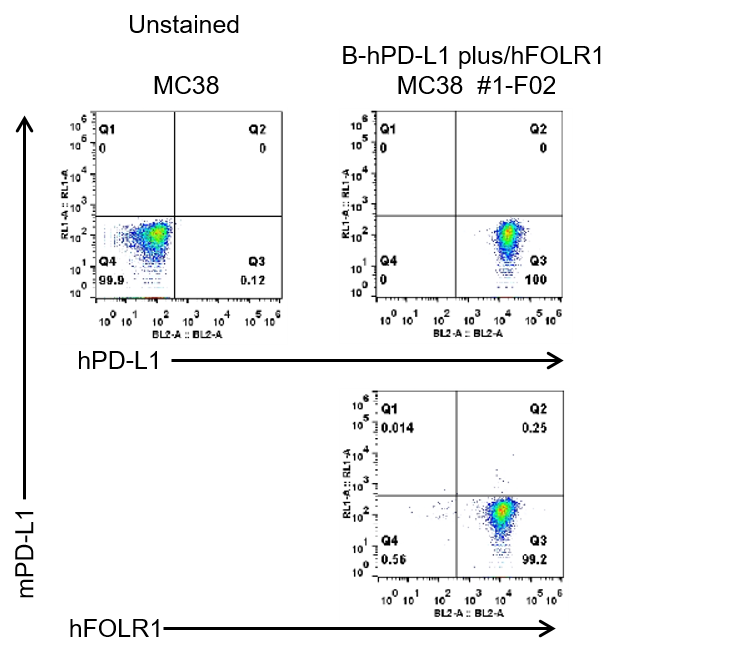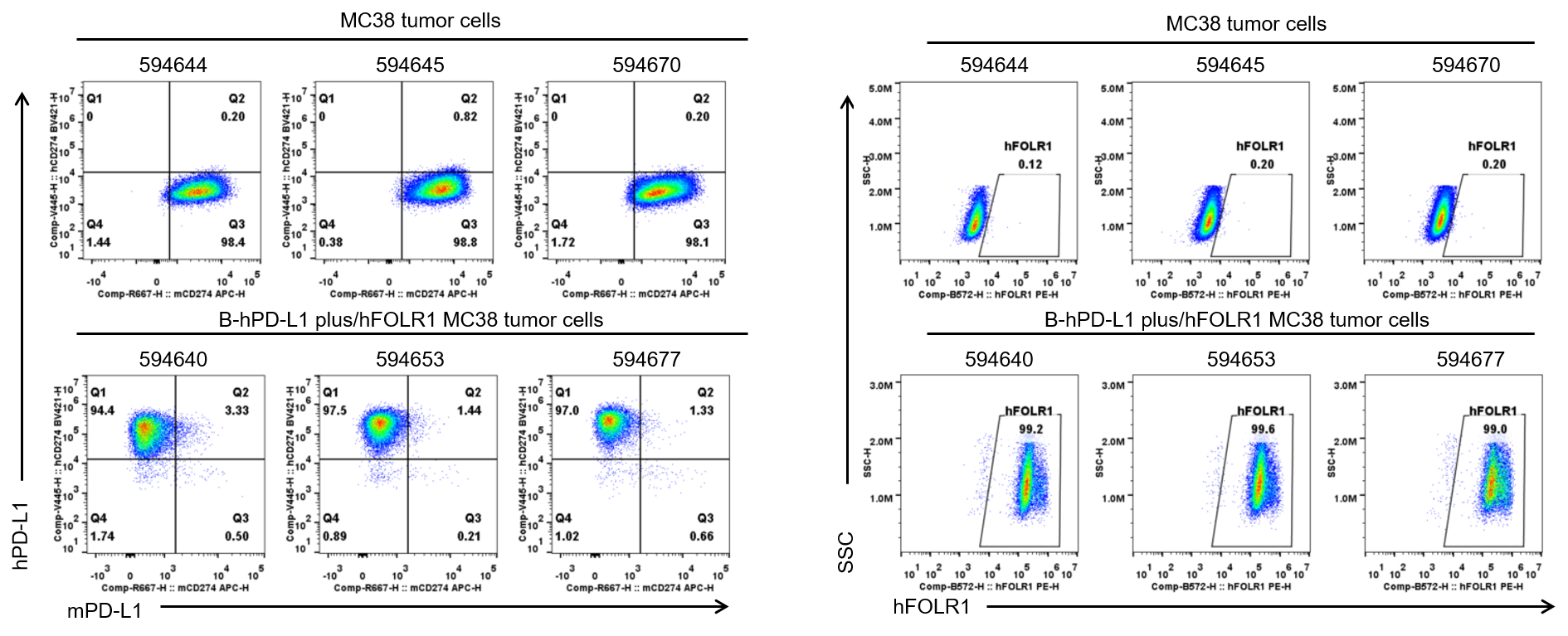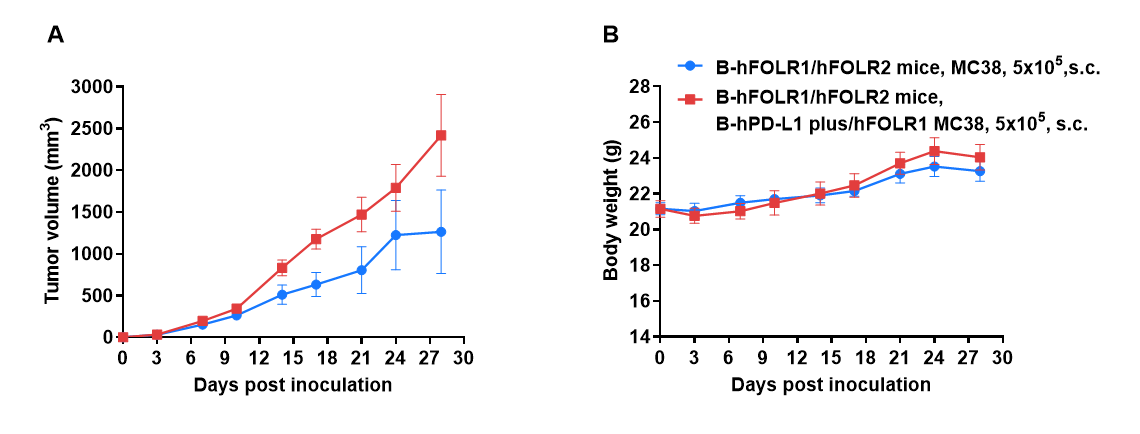
• 322419

| Product name | B-hPD-L1 plus/hFOLR1 MC38 |
|---|---|
| Catalog number | 322419 |
| Strain background | C57BL/6 |
| NCBI gene ID | 29126,2348 (Human) |
| Official symbol | Cd274; Folr1 |
| Chromosome | 19, 7 |
| Aliases | B7-H, B7H1, PDL1, PD-L1, hPD-L1, PDCD1L1, PDCD1LG1; FBP, FOLR, NCFTD, FRalpha |
| Tissue | Colon |
| Disease | Colon carcinoma |

PD-L1 and FOLR1 expression analysis in B-hPD-L1 plus/hFOLR1 MC38 cells by flow cytometry. Single cell suspensions from wild-type MC38 and B-hPD-L1 plus/hFOLR1 MC38 cultures were stained with species-specific anti-mouse PD-L1(Biolegend, 124312), anti-human PD-L1 (Biolegend, 329706) and anti-hFOLR1(Biolegend, 908304) antibodies. Human PD-L1 and human FOLR1 was detected on the surface of B-hPD-L1 plus/hFOLR1 MC38 cells but not wild-type MC38 cells. The 1-F02 clone of B-hPD-L1 plus/hFOLR1 MC38 cells was used for in vivo experiments.

B-hPD-L1 plus/hFOLR1 MC38 cells were subcutaneously transplanted into B-hFOLR1/hFOLR2 mice (female, 9-week-old, n=6), and on 28 days post inoculation, tumor cells were harvested and assessed for human PD-L1 and human FOLR1 expression with anti-mouse PD-L1(Biolegend, 124312), anti-human PD-L1 (Biolegend, 329706) and anti-hFOLR1(Biolegend, 908304) antibodies by flow cytometry. As shown, human PD-L1 and human FOLR1 was highly expressed on the surface of tumor cells. Therefore, B-hPD-L1 plus/hFOLR1 MC38 cells can be used for in vivo efficacy studies of novel PD-L1 and FOLR1 therapeutics.

Subcutaneous homograft tumor growth of B-hPD-L1 plus/hFOLR1 MC38 cells. B-hPD-L1 plus/hFOLR1 MC38 cells (5x105) and wild-type MC38 cells (5x105) were subcutaneously implanted into B-hFOLR1/hFOLR2 mice (female, 9-week-old, n=6). Tumor volume and body weight were measured twice a week. (A) Average tumor volume ± SEM. (B) Body weight (Mean± SEM). Volume was expressed in mm3 using the formula: V=0.5 X long diameter X short diameter2. As shown in panel A, B-hPD-L1 plus/hFOLR1 MC38 cells were able to establish tumors in vivo and can be used for efficacy studies.